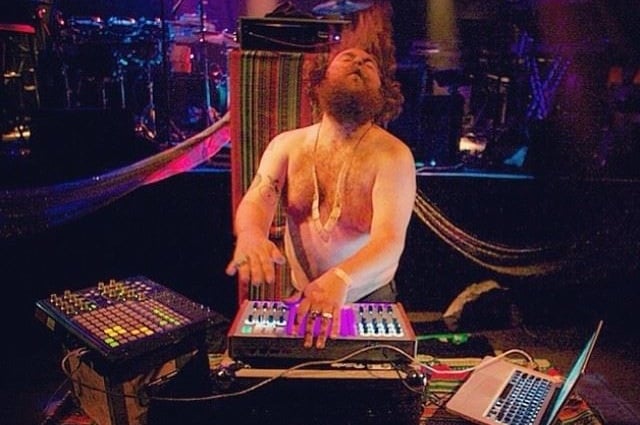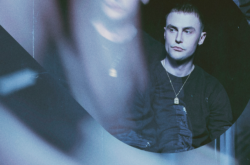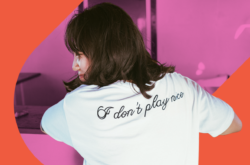Just before their set on the main stage during Electric Daisy Carnival, Las Vegas, we had a chance to catch up with world-renowned DJs and Producers Markus Schulz and Ferry Corsten of New World Punx. Amidst the last moments going over their set in the trailer, the guys took a moment to tell us about their favorite studio tools, how they collaborate and more.
Nate Mars: You’ve individually had very successful solo careers. What ultimately brought you two together to form New World Punx?
Ferry Corsten: Well, the idea is… we’ve come to the point in our careers where we’ve dealt with the politics, we’ve seen quite a bit of it. I think we’ve reached the point where we want to say, “Hey, we really want to have fun.” We share the same passion for the same type of music, come from the same sort of background in a way. It was sort of a natural evolution.
Markus Schulz: Yeah, it all came from trying to get back to having fun. When we’re doing this project, when we’re working, even when we were in a hotel room tightening up this set, we’re dancing around, high‑fiving like, “Oh my God, this is going to destroy the place.” It reminds you of exactly why we got into this music in the first place. That’s what it all comes down to.
NM: When you first started collaborating, what was the first thing that you noticed about your work flow together?
Markus: That it was very simple. Ferry would come up with an idea. We’d turn it up, listen to it, jump around the studio. “Move out of the way.” No egos, nothing. It was like, boom, he jumps in and does something. I jump in and do something ‑‑ it’s natural.
Ferry: The fun thing is that our sound has evolved a lot. Markus is more known for the darker, techier sound and I’m more known for some of the melodic stuff. Our processes over the last year and a half have completely turned around. I got really dark and stuff. [laughs]
Markus: It’s funny, because people listen to a New World Punx track and they go, “Oh, I know exactly part Ferry did and what part Markus did.”
Ferry: They couldn’t be more wrong. [laughs]
Markus: Yeah, it’s totally opposite. I’ll come up with something melodic to inspire Ferry, and Ferry will try to come up with something dark and twisted to inspire me. It’s like the track was made totally different.
NM: In terms of collaborating, it seems like you guys work in the studio together a lot. You’re not passing files back and forth?
Markus: No, we do that as well.
Ferry: We also do that, but we’ve had a few moments in the studio. Markus is in Europe quite often. I’m in the States quite often. When we play together as New World Punx we’ve had a few times where we’ve stayed in LA for a couple of days. I was in Miami for WMC, and he lives there so I’ll drop by. He needs to be in Europe for a couple of show dates, and during the week he stops by my studio.
Markus: We start a lot of new projects when we’re in the same place together, then Ferry will take the session, work on it and send it to me. I’ll work on it and the session will go back and forth.
NM: Cool, when you’re talking about “the session”, what’s the primary DAW that you guys are working in?
Markus: That’s where it’s tricky. Ferry works mostly in Cubase and I work in Logic. What we do is stem out audio tracks.
NM: In a way that moves things forward, right? It’s a little more of a pain to go back, so you’re always in motion finishing things.
Ferry: The thing we both use Ableton Live.
Markus: That’s the one DAW that we both use in common.
Ferry: Once we have the stems sorted out and we want to do an edit or something, we send the Ableton Live session file back and forth.
NM: What about plugins? Are there any go‑to third party plugins that you both use a lot?
Ferry: Needless to say, it’s Sylenth like the whole rest of the industry. I think the new kid on the block is definitely SPIRE. It’s unreal. It’s amazing.
Markus: I think there are three for me ‑‑ Sylenth is number one, SPIRE number two, and then Saurus has also been getting used a lot.
Ferry: Saurus is amazing, too.
Markus: The thing is, we’re both nerds. We’re both always looking for something new and always trying to make something new. At the end of the day, if you know a little bit, the basics, of sound design, you can pretty much use any synth. Those are the three that we like to work with.
NM: What informs your work these days, other than, of course, working with each other? How do you find yourselves continuing to learn?
Markus: I think just listening to music.
Ferry: Yeah, different music styles in general. I love listening to drum and bass, because I think that’s such a forward type of music in the sense of production. Also the whole Deep House thing that’s coming up right now, I love it. It’s new, it’s cool, it has a different flavor to it, and it’s nice to listen to that to get inspired.
NM: Do you have any words of wisdom you want to share?
Ferry: Never be afraid to just explore. There are too many clones of the big names out there already. Don’t be another clone.
Markus: It seems like right now a new trend comes along and everybody makes 20 tracks that sound just like it. It’s still going on. The thing I always say is you’ve got to remember that a track that is coming out today was signed probably about six months ago.
If you’re making a track that you’re hearing today, if you even get it signed, it’s not coming out for another six months. By that time, if you’re chasing a sound, that sound is going to be done by then anyway. Be creative. Be original, and don’t always chase the latest sound. Try and come up with something interesting, a new twist. I tell you…
Ferry: Don’t play it safe.
About the Splice Artist Series – We empower music creators to create and collaborate fearlessly. Our goal is to build the best platform possible in order to enable that process. We hope that you learn just as much as we do, hearing from artists about their workflow and how they collaborate. Most importantly after reading, we hope you are inspired to make music!
June 26, 2014






